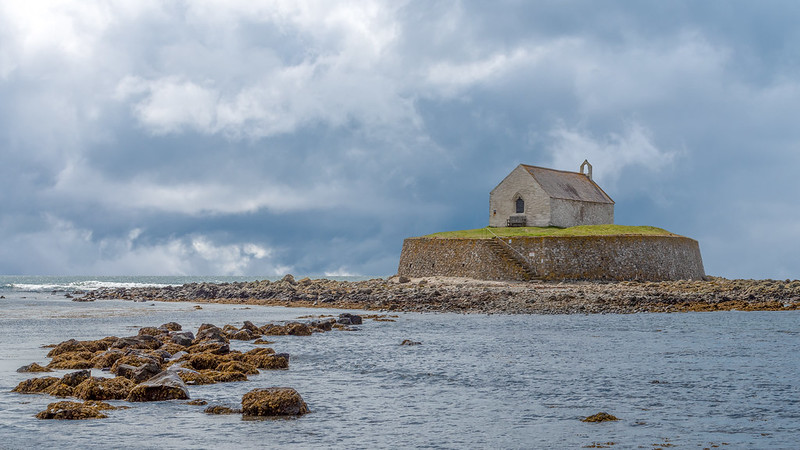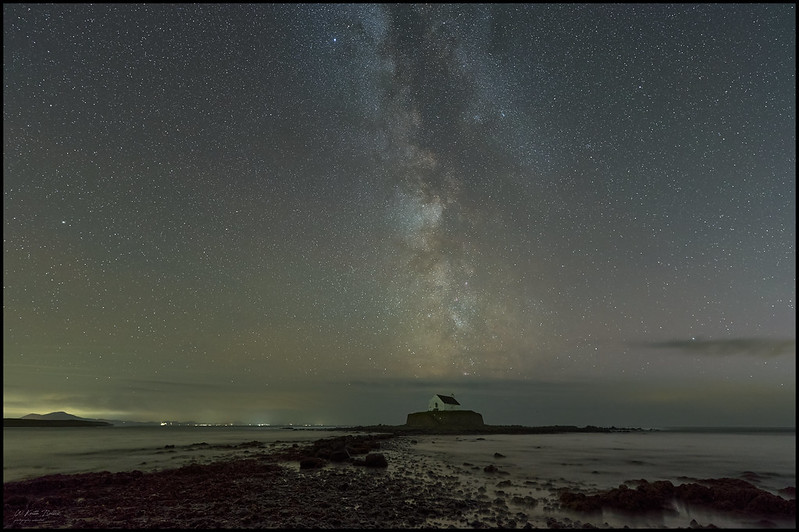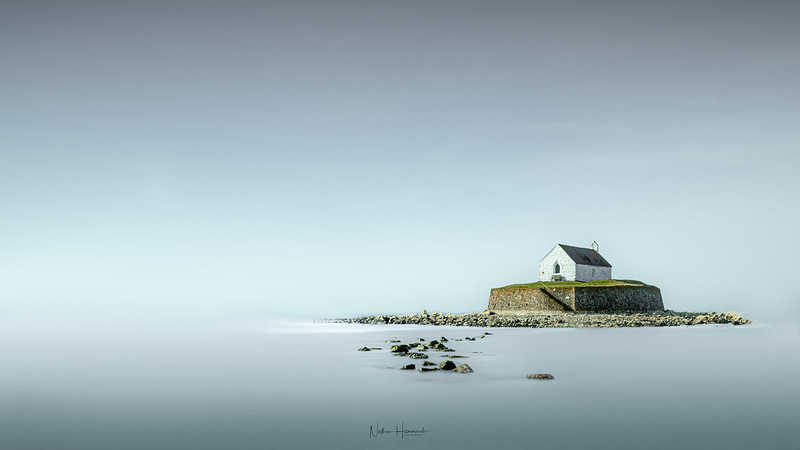North Wales is full of dramatic landscapes that harken back to the less complicated past. With a rugged coastline, craggy hillsides, pastoral farmlands, well-intact stone castles, and jagged mountains that envelop the area’s great lakes, North Wales is cut straight out of a fairytale or fantasy epic like The Lord of The Rings or Game of Thrones.
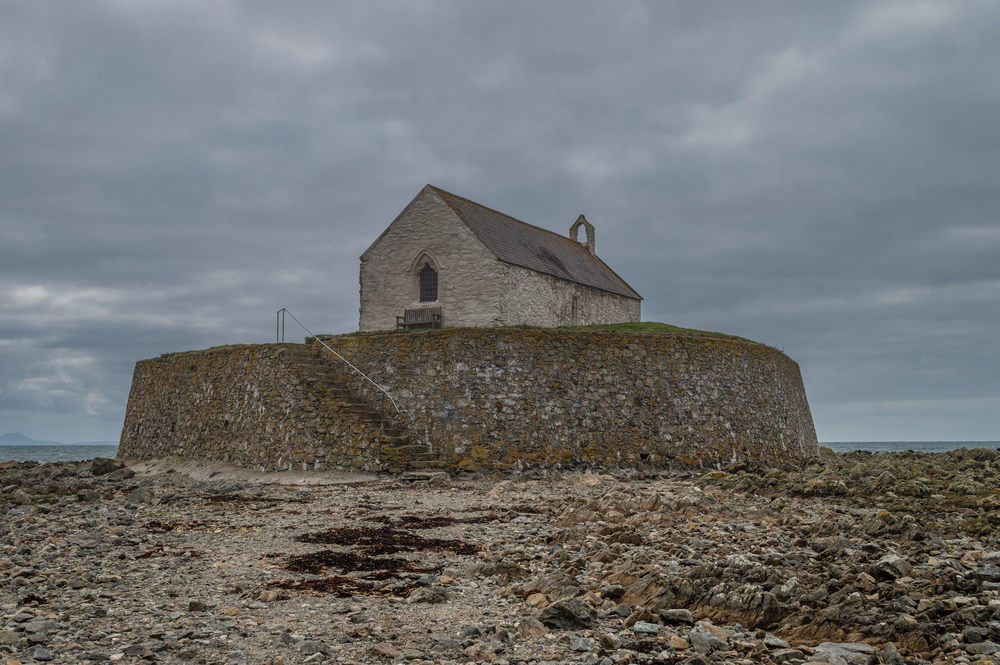
The 12th century St Cwyfan Church, on the small tidal island of Cribinauon, on Anglesey.
Photo by depositphotos.com
One of Northern Wale’s most intriguing and unique sights is St. Cwyfan’s church, known in Welsh as Egwyls Cyfan and commonly referred to as the “little church in the sea.”
The current church dates back to the 12th century. It is reported that there has been some form of a church where St. Cwyfan is currently located since the 7th century. The current iteration was constructed for St. Kevin (Cwyfan in Welsh). He founded a monastery across the Irish Sea in Glendalough, Ireland.
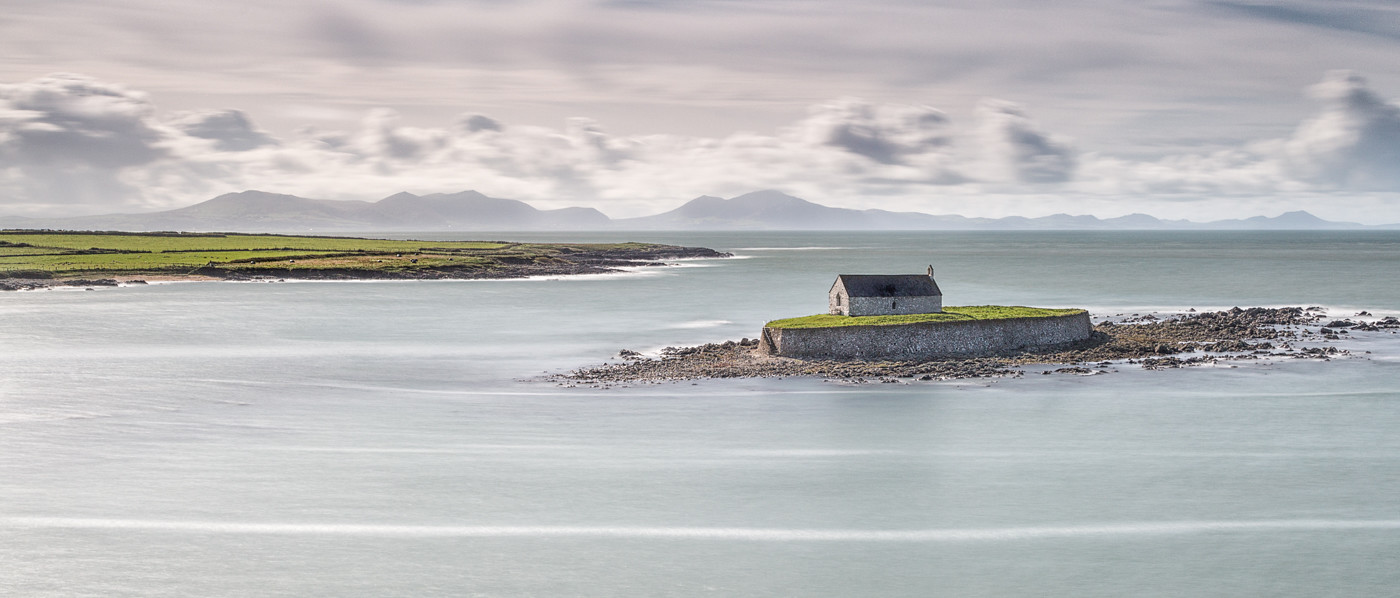
Photo by Keith/Flickr
The church is a mix-mash of renovation and reconstruction. Only a portion of the church’s south wall dates back to the original construction in the 12th century. The church was almost entirely rebuilt in the late 1800s. Following a long period of neglect, the church and its foundation were in total disrepair when a local architect named Harold Hughes advocated for and collected money to repair the church, build a breakwater, and do a nearly complete rebuild of the church building itself in 1893.
The island church is snuggled in a bay between the Aberffraw and Anglesey Circuits. The church was initially situated on a small peninsula of land located between the ports of Cwyfan and China. Over centuries of slow, steady erosion, the church separated from the rest of the peninsula, now stranded on its own small island called Cribinau. Today the church is only accessible during low tide.
Today’s visitors can reach St. Cwyfan via a nearby car park across the water from the church. From there, visitors must walk across a rocky causeway (during low tide, those visiting should check the tide schedule to ensure they do not get stranded) to arrive at Cribinau island and access the church. The walk is short, taking most visitors approximately 15 minutes.
References:
Information on North Wales- (https://www.visitwales.com/destinations/north-wales)
Information regarding St. Cwyfan and its history-(https://discovernorthwales.com/st-cwyfans-church/)
Information on the church’s reconstruction-(
Click Here to Read the Full Original Article at Unusual Places…
